AP Biology - Unit 2: Cell Structure and Function
1/64
There's no tags or description
Looks like no tags are added yet.
Name | Mastery | Learn | Test | Matching | Spaced |
|---|
No study sessions yet.
65 Terms
Describe the composition of a phospholipid.
Phospholipids have one hydrophillic head, composed of a phosphate group and a glycerol, as well as hydrophobic tails made up of fatty acids.
What is the difference between prokaryotes and eukaryotes?
Prokaryotes are generally smaller than eukaryotes, and unlike prokaryotes, eukaryotes have membrane-bound organelles.
Where is DNA located in prokaryotic cells? Eukaryotic cells?
In prokaryotic cells, DNA is located in the nucleoid region, while in eukaryotic cells it is located in the nucleus.
What organelles are only found in plant cells?
Chloroplasts, plasmodesmata, a central vacuole, and a cell wall
What organelles are only found in animal cells?
Lysosomes, centrosomes, and flagella
What is compartmentalization, and how does it benefit eukaryotic cells?
Compartmentalization refers to the ways in which chemical reactions are divided into specific regions of the cell, called organelles. This benefits eukaryotic cells by increasing the surface area for reactions to occur, as well as preventing interfering reactions from occurring in the same location.
What is a ribosome?
An organelle with the function of synthesizing proteins
How do ribosomes contribute to protein synthesis?
Ribosomes, when assembled, have "docking ports" for both mRNA (Messenger RNA) and tRNA (Transfer RNA). mRNA contains the instructions for proteins, while tRNA contains individual amino acids. The ribosomes read the instructions within mRNA, and assemble the tRNA in the order needed to create its specific protein.
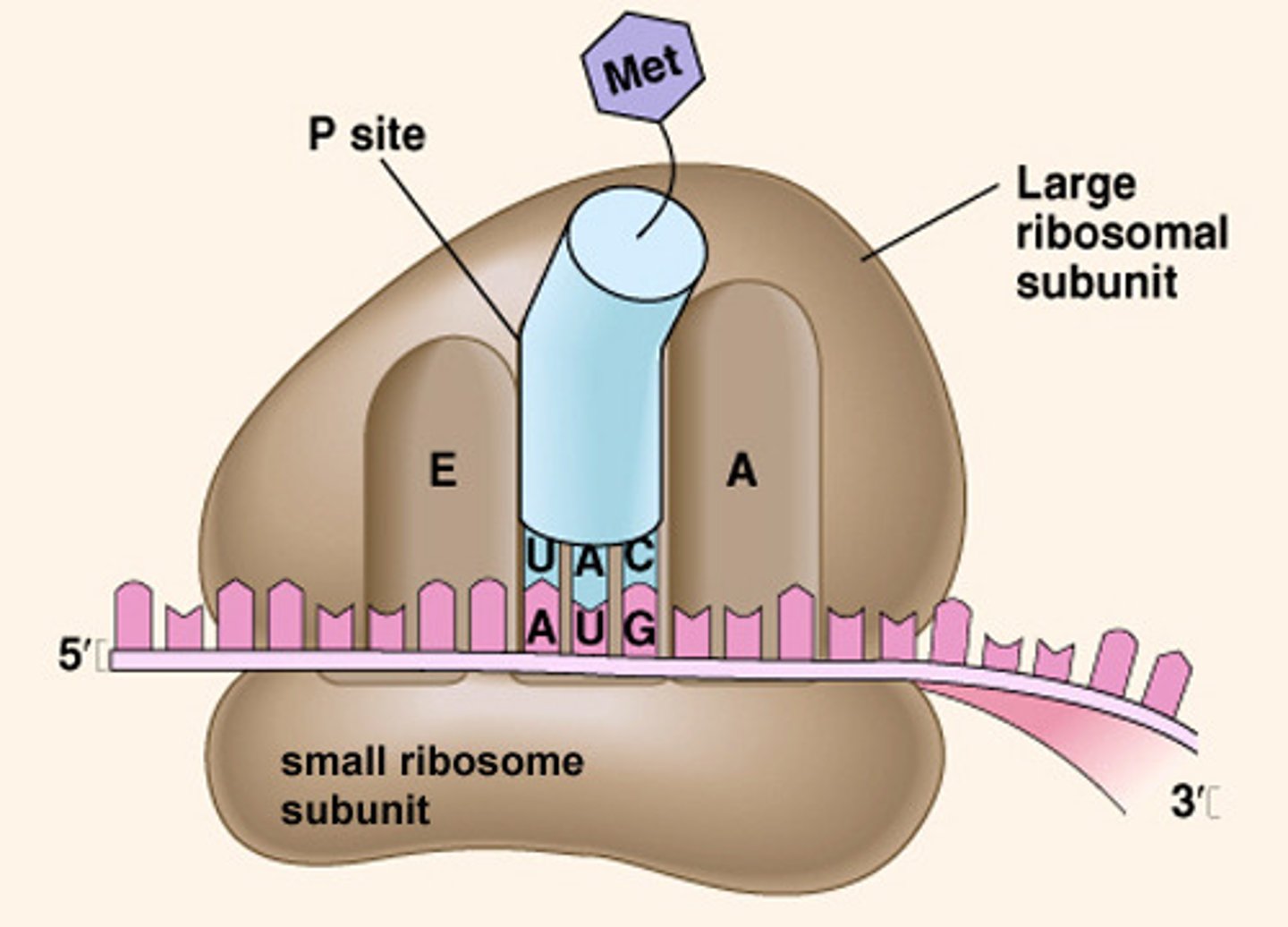
What is the nucleus of the cell?
Here, genetic information is stored in the form of chromosomes (made up of DNA). It contains the nucleolus, and its nuclear envelope has pores which regulate the entry and exit of material.
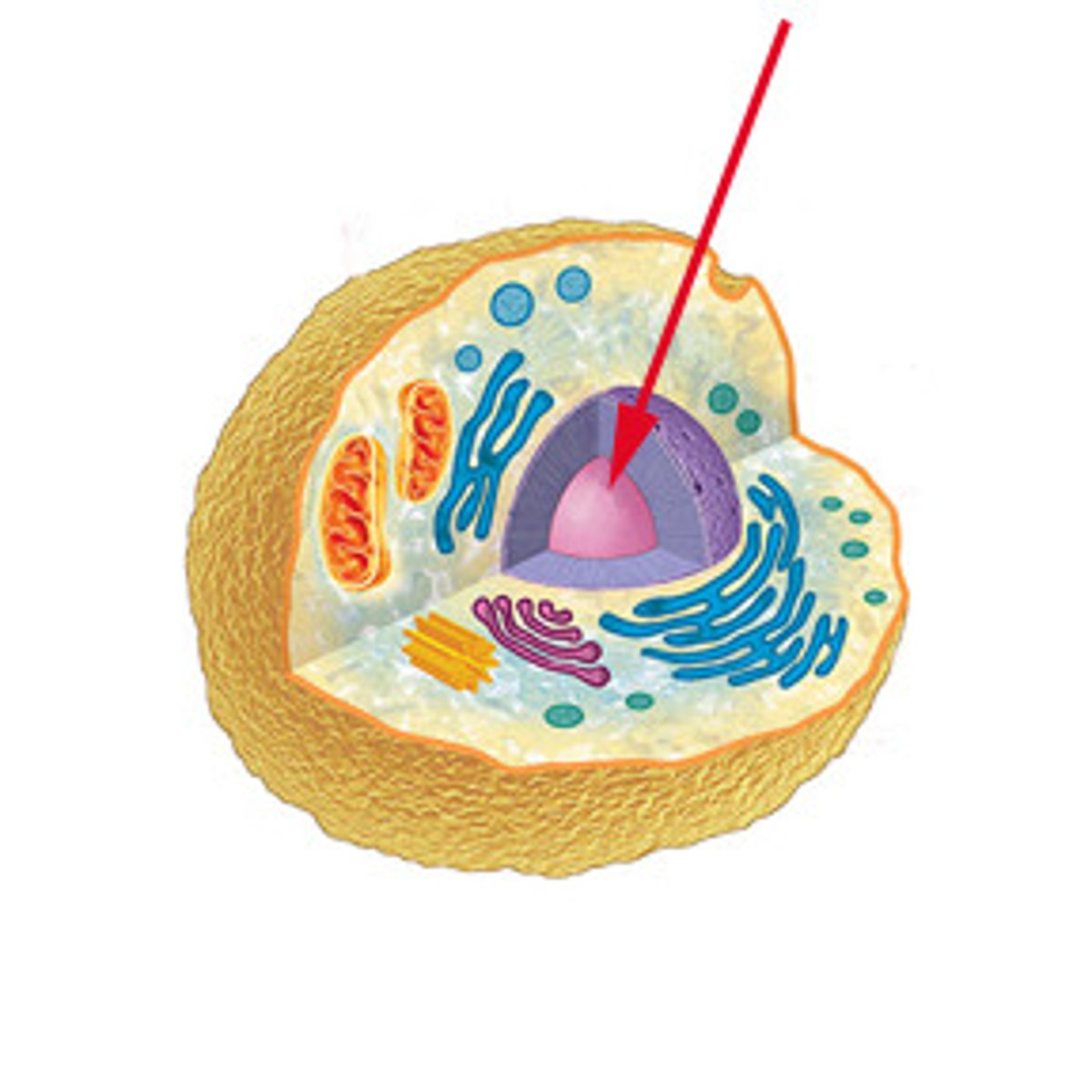
What is the nucleolus?
Here, ribosomal RNA (rRNA) is synthesized and combined with proteins to form large and small subunits of ribosomes. These subunits leave the nucleus through its pores.
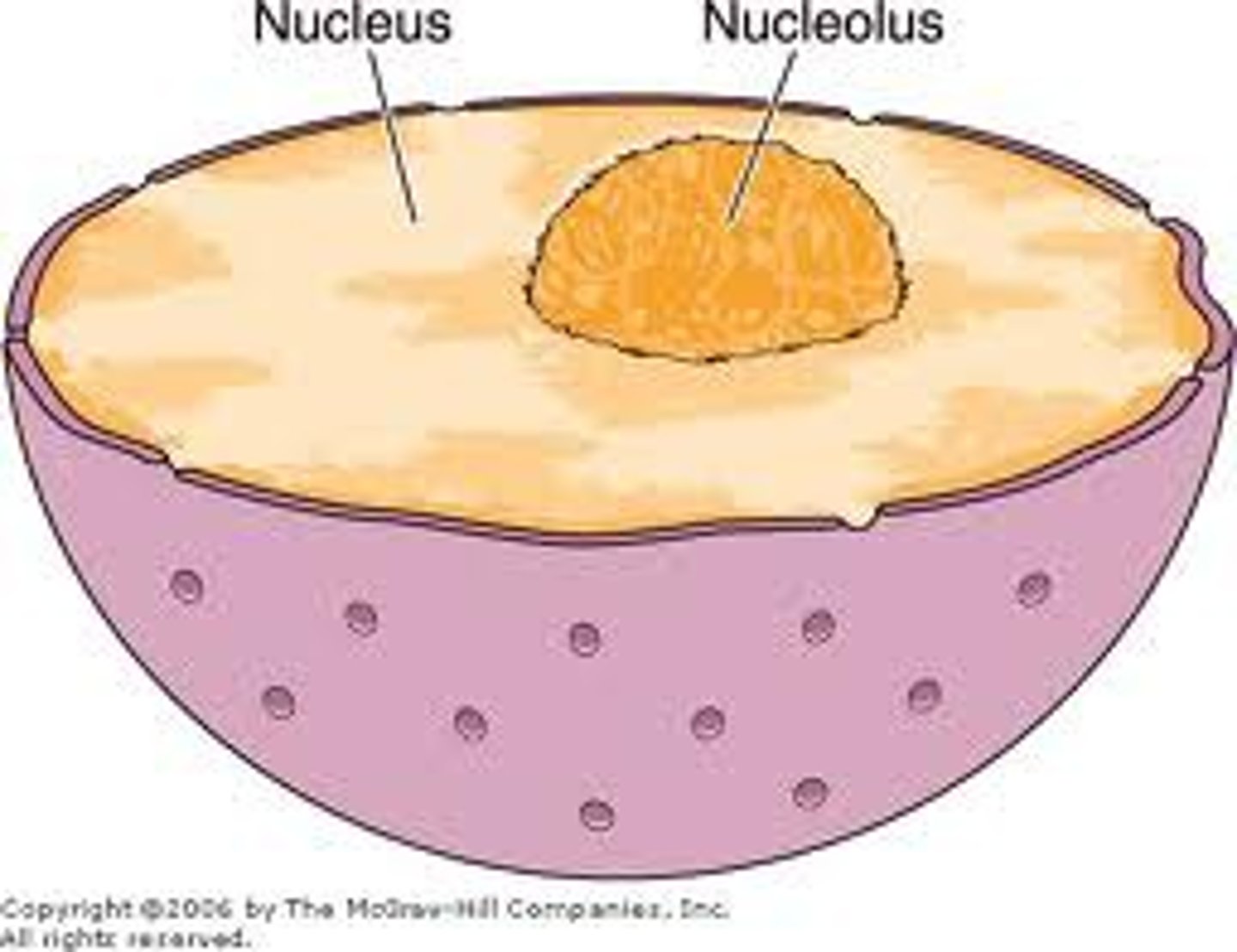
What is the rough endoplasmic reticulum?
Here, ribosomes are bound to the endoplasmic reticulum, keeping these ribosomes separate from those in the cytosol (known as "free ribosomes")
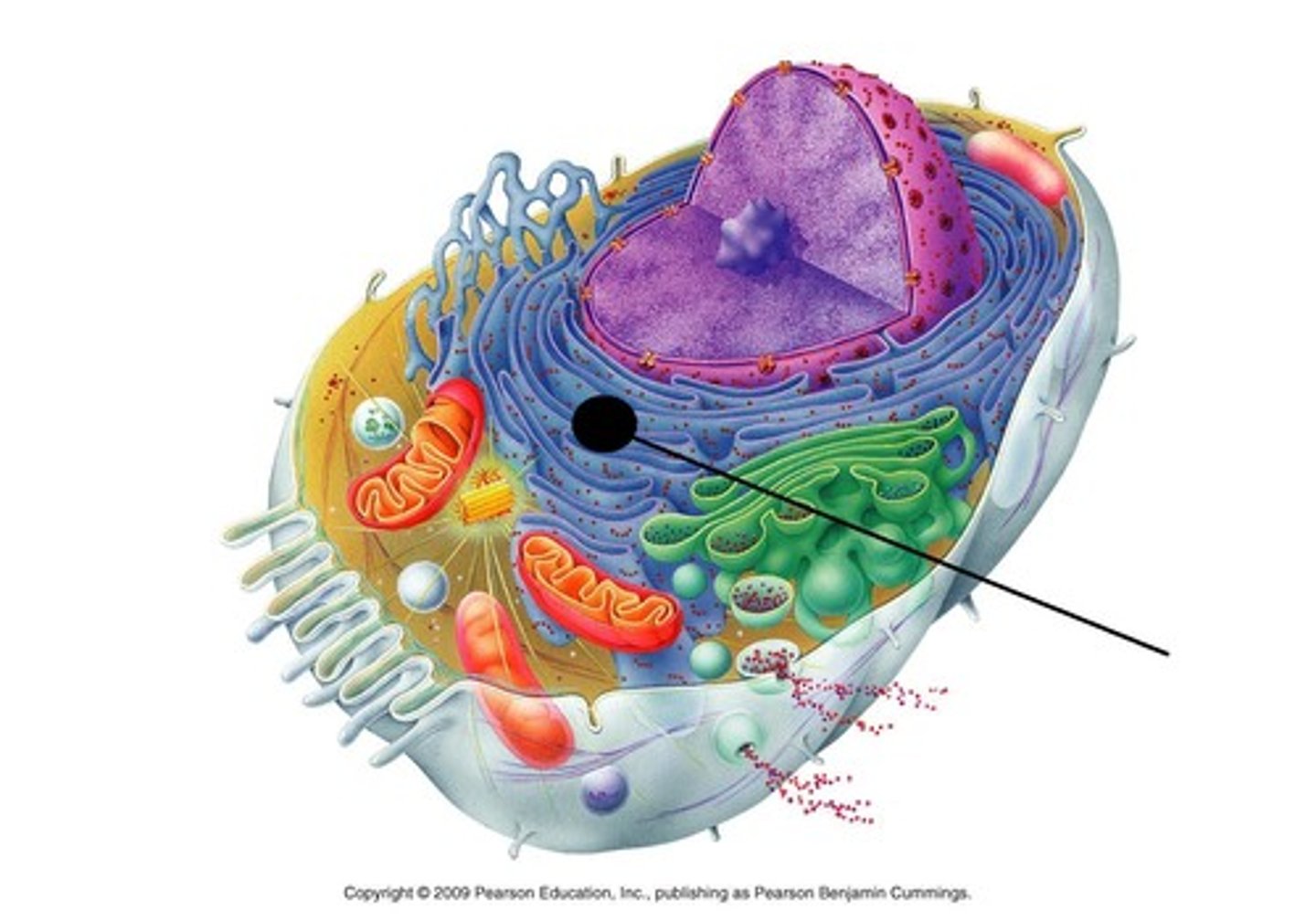
What is the smooth endoplasmic reticulum?
Here, no ribosomes are bound to the endoplasmic reticulum and instead, this organelle functions to synthesize lipids, metabolize carbohydrates, and detoxify the cell
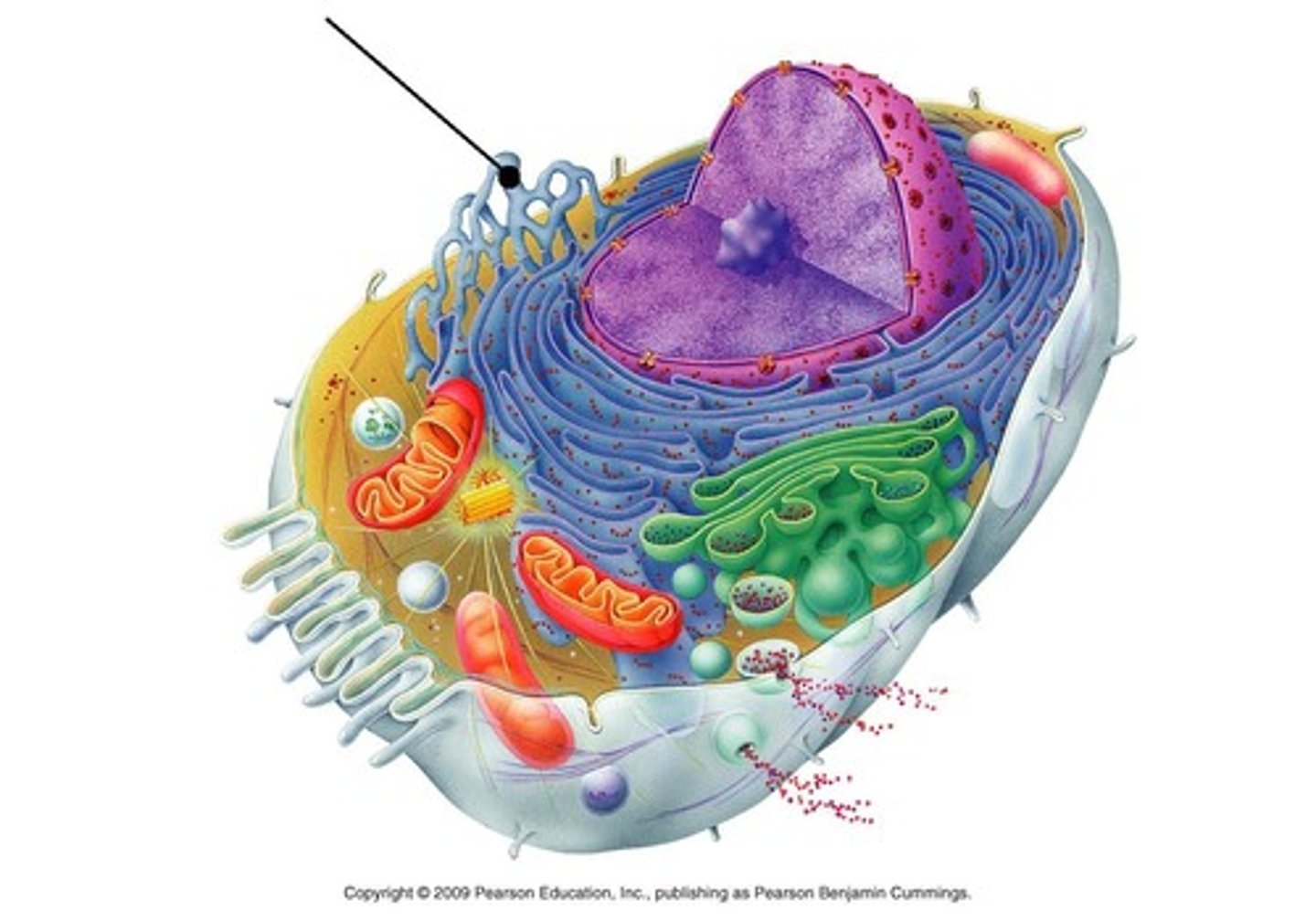
What is the golgi complex?
Here, the organelle is composed of flattened, membranous sacs called cisternae. It has directionality (within organelles, this means two sides with distinctly different functions). Its primary function is to ensure that newly formed proteins are correctly folded, sorted, and distributed throughout the cell.
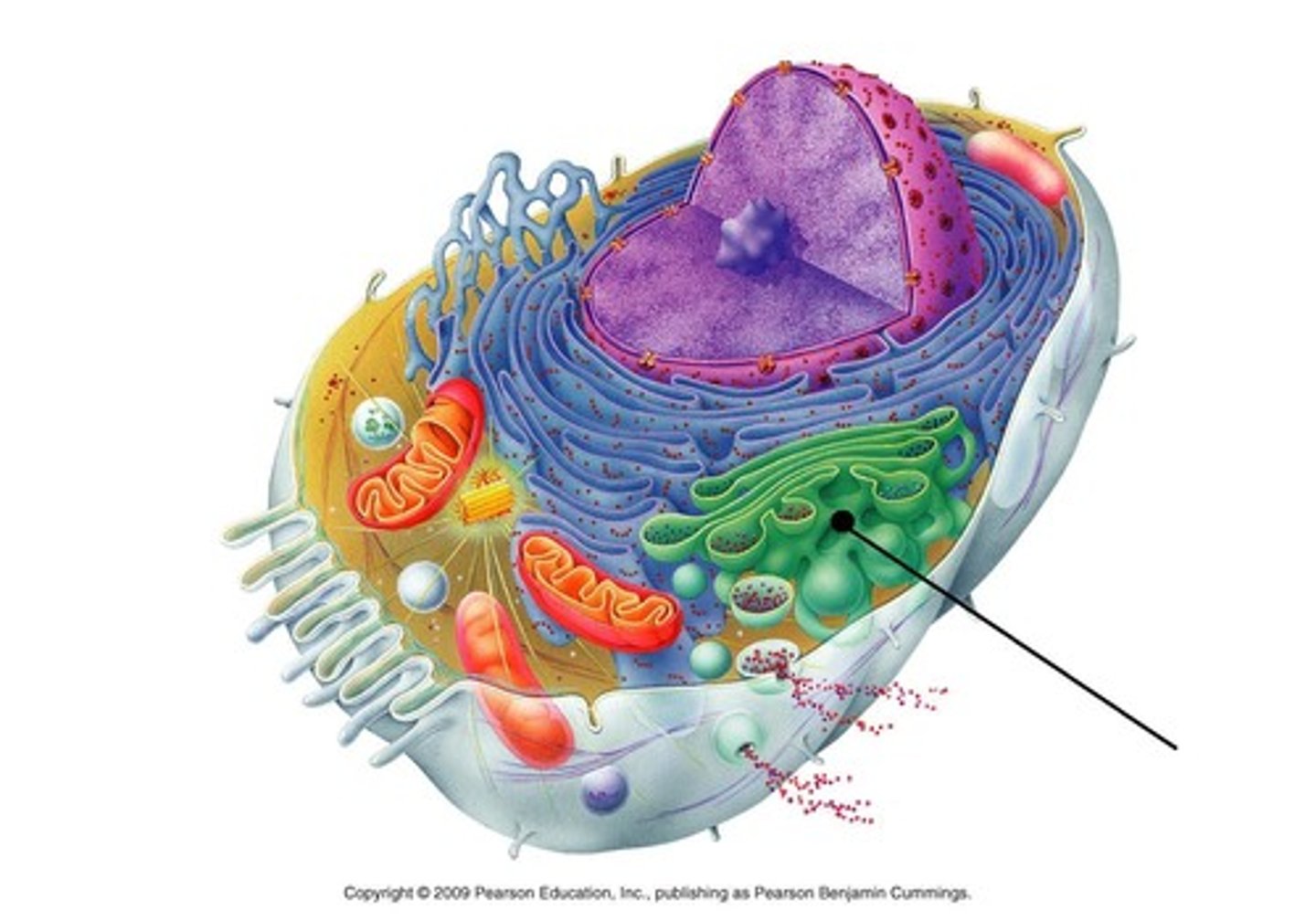
What are lysosomes?
Here, hydrolytic enzymes are contained within a membranous sac. It functions to hydrolyze macromolecules within the cell, allowing this organelle to recycle its own organic material and recycle it.
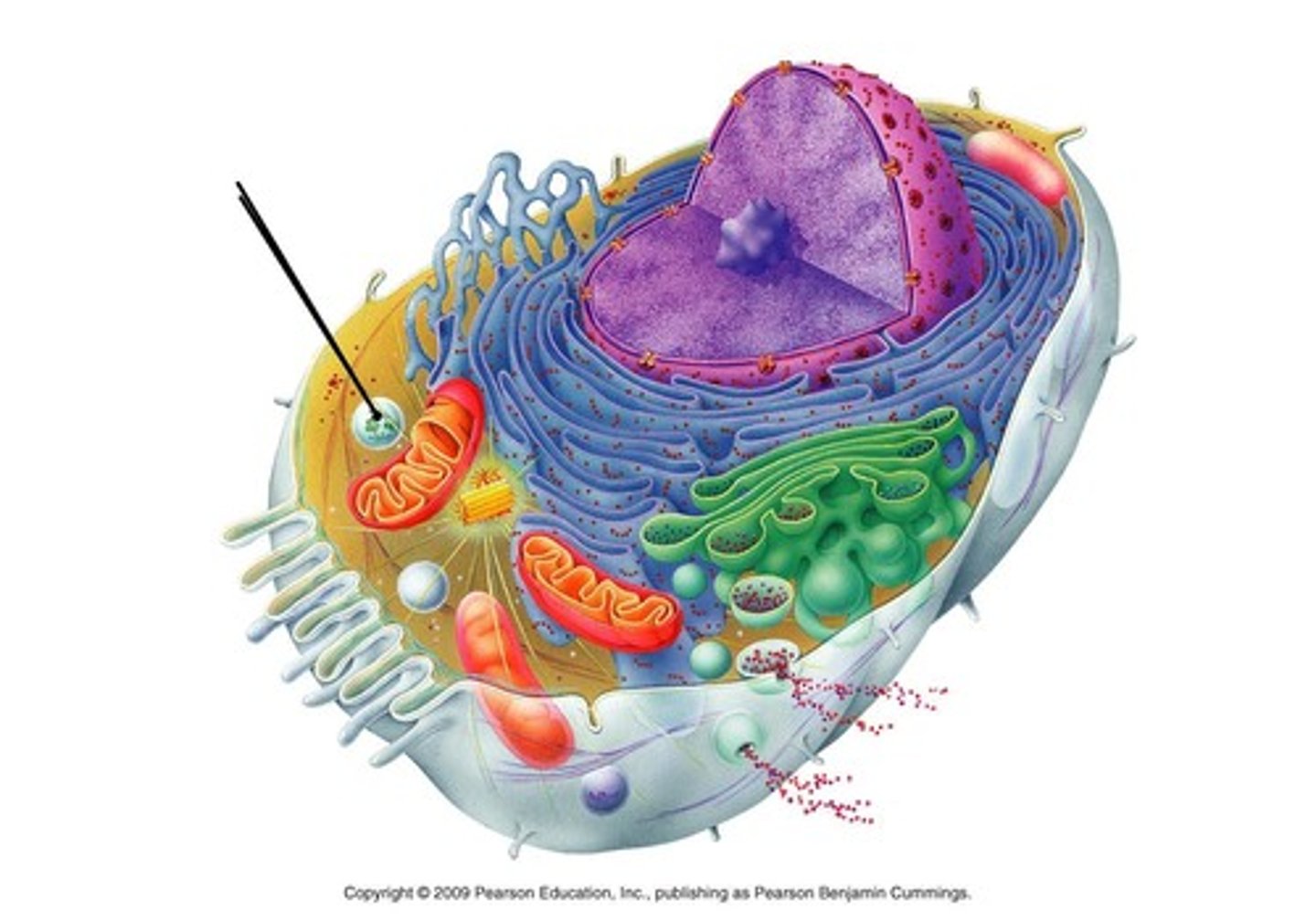
What are peroxosomes?
Here, membranes are bound to metabolic compartments and function to catalyze reactions which produce H2O2 (peroxide). Enzymes here then break down peroxide into water.
What are vacuoles?
Here, the organelle functions as a large vesicle. It can contain digestive enzymes (phagocytosis), water (to maintain water levels), and in plants, can contain inorganic ions and water.
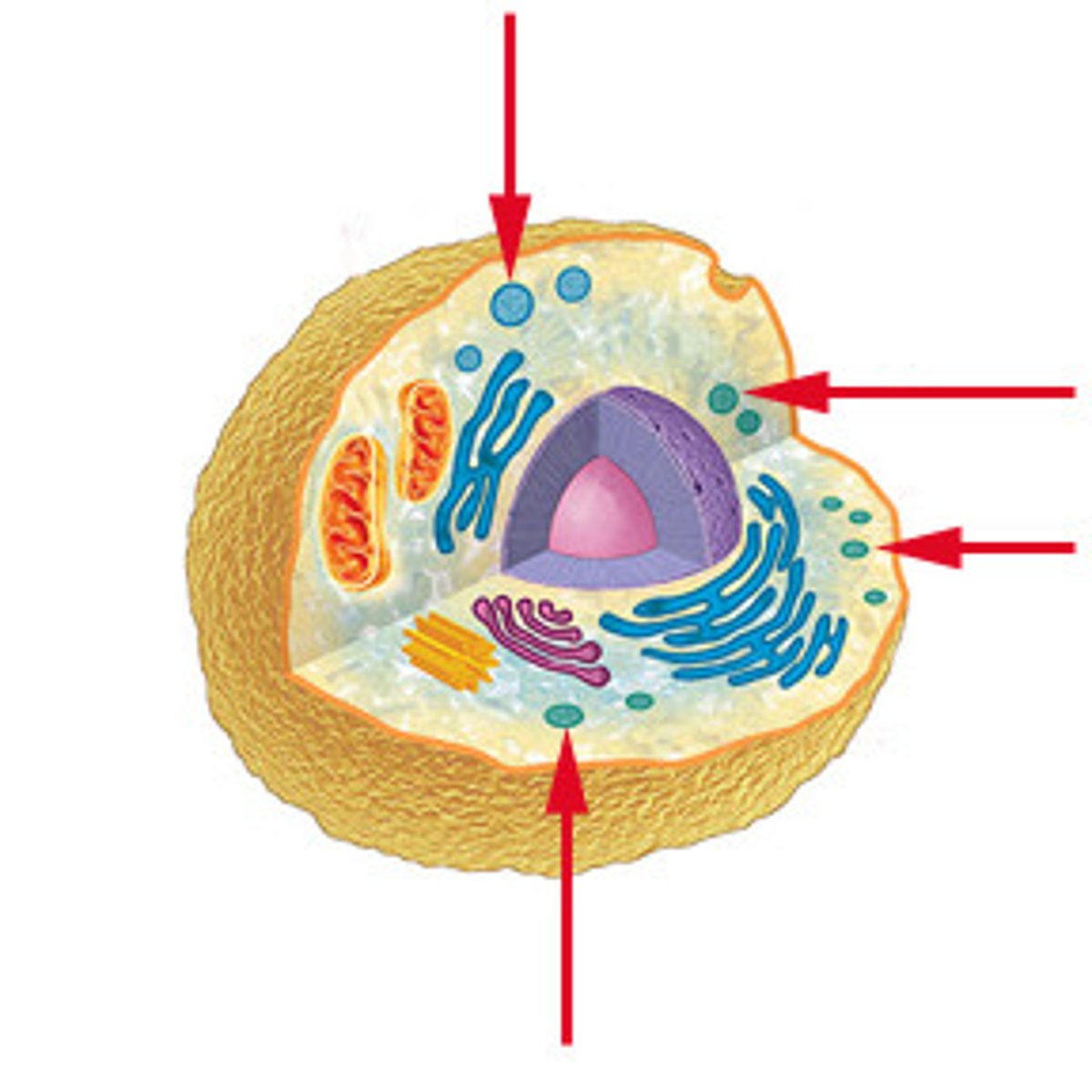
What are mitochondria?
Here, a smooth outer membrane and folded inner membrane (folds are called cristae) are divided by two internal compartments. It functions primarily to catalyze cellular respiration and produce energy for the cell.
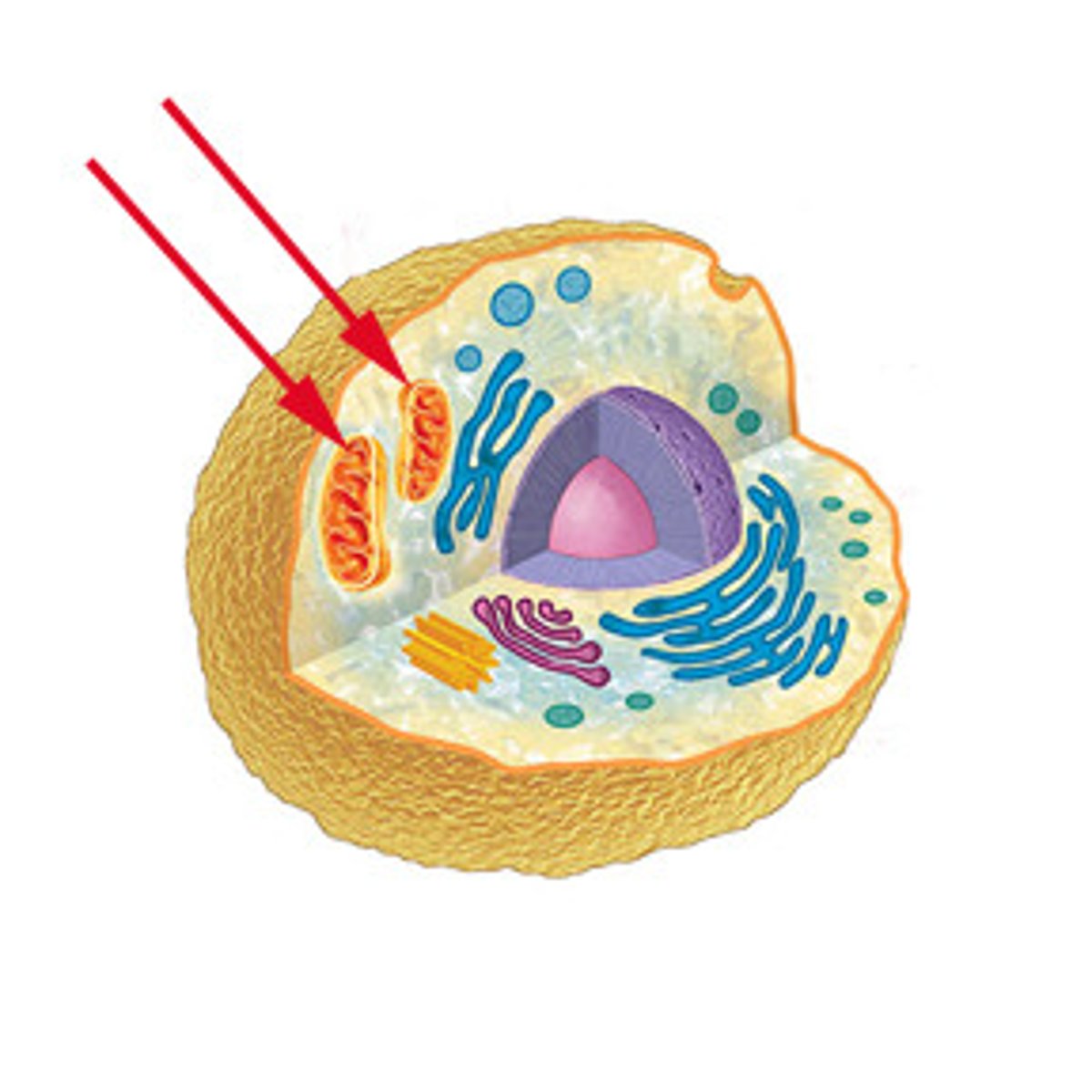
What is the relationship between the number of mitochondria in a cell and that cell's metabolic activity?
More mitochondria suggest high metabolic activity, and high metabolic activity suggests a high number of mitochondria (the same is true for low metabolic activity and few mitochondria).
What are chloroplasts?
Here, photosynthesis occurs. This organelle is exclusive to photosynthetic organisms and contains the green pigment chlorophyll.
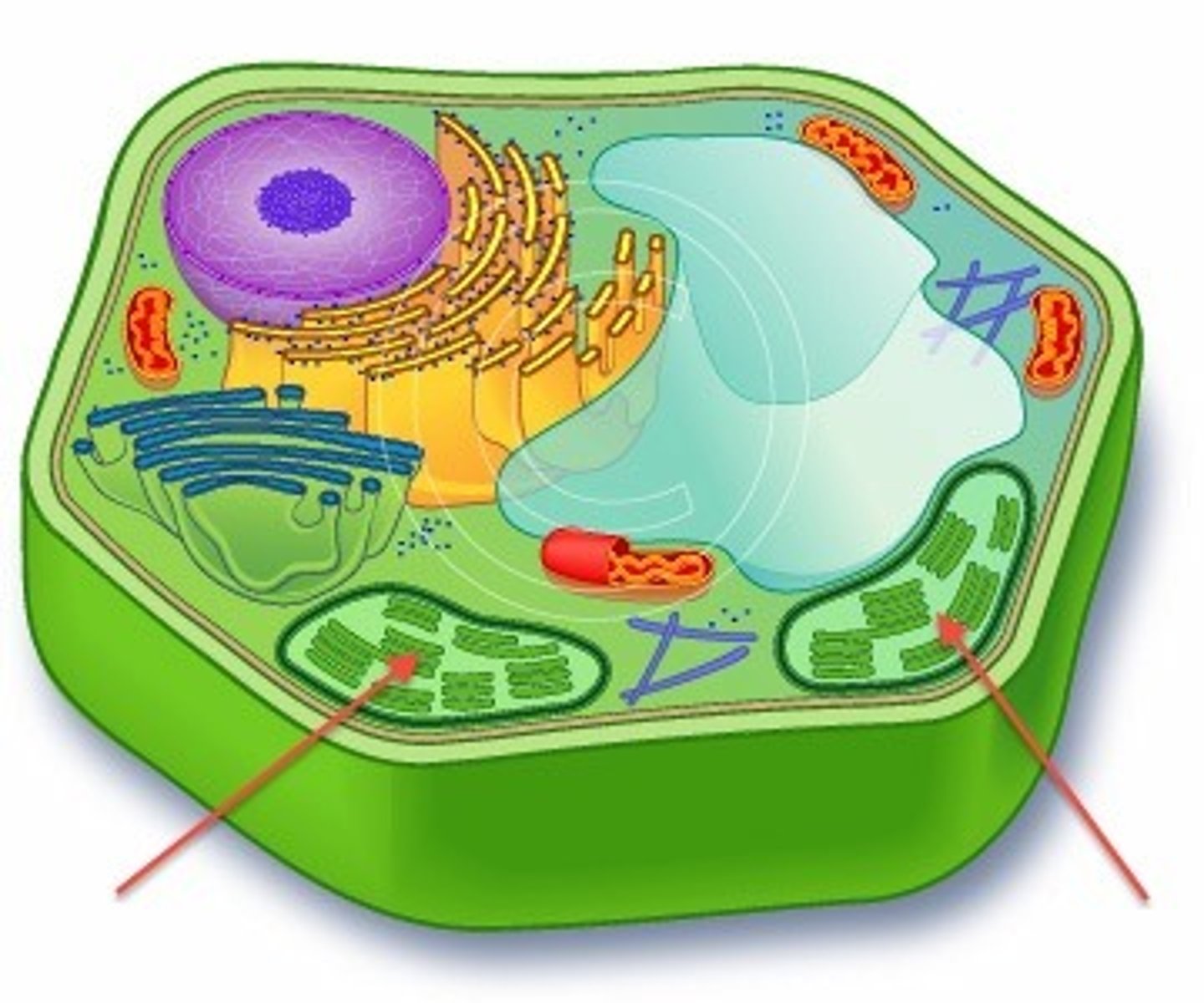
What is inside of a chloroplast's double membrane?
Thylakoids and the stroma
What is a thylakoid?
A membranous sac that organizes into sacs called grana. Here, light dependent reactions occur.
What is the stroma?
The fluid portion outside of thylakoids. Here, the calvin cycle occurs (the process in which carbon dioxide from the air is turned into sugar for aerobic cellular respiration).
What is the cytoskeleton of a cell?
The cell's network of fibers throughout the cytoplasm that give structural support, anchor organelles, and allow for the movement of vesicles and organelles and/or the whole cell by interacting with motor proteins.
What are the three main fibers in the cytoskeleton?
Microtubules, microfilaments, and intermediate filaments
What are microtubules?
Hollow, rod-like structures made of the protein tubulin. They serve as "tracks" for the movement of organelles that are interacting with motor proteins, as well as assist in the separation of chromosomes during cell division.
What are microfilaments?
Thin, solid rods made of the protein actin that act to maintain cell shape, assist in muscle contraction and cell motility, and divide animal cells.
What are intermediate filaments?
Fibrous proteins that maintain cell shape, anchor the nucleus and organelles, and form the nuclear lamina that lines the nuclear envelope. They serve as permanent structural elements of cells.
What are flagella?
Threadlike appendages extending outward from the plasma membrane that allow for the movement of the entire cell.
What are cilia?
Tiny, hair-like protrusions from the cell used to move it or to move things past it
What is the endosymbiont theory? How does it pertain to mitochondria and chloroplasts?
This theory states that an early eukaryotic cell engulfed a prokaryotic cell, and that the prokaryotic became endosymbiont (it lives within another cell). This specifically highlights mitochondria and chloroplasts, as they both contain double membranes, ribosomes, circular DNA, and can function on their own.
What is the plasma membrane?
It separates the internal cell environment from an external environment. It is amphipathic - phospholipid tails orient inward due to hydrophobic interactions, while the hydrophillic heads form the surface of the membrane.
What is the composition of a phospholipid?
A glycerol backbone and a phosphate head make up the hydrophillic region, while a pair of fatty acids make up its hydrophobic tails.
What is the definition of amphipathic?
It refers to a molecular structure which has both hydrophobic and hydrophillic regions
How does cell size influence the efficiency of plant and animal cells?
At certain sizes, it becomes too difficult for a cell to regulate what comes in and what leaves the plasma membrane.
How are cell size and metabolism related?
Cell metabolism depends on cell size. Gaining the proper resources needed for cell functions requires the cell to easily manage the transfer of materials through the plasma membrane.
What mathematical ratio can be used to determine a cell's efficiency?
Its surface area to volume ratio (often referred to as SA:V). A higher SA:V ratio suggests that a cell is more efficient.
What are the effects of a high cell size?
Due to a low SA:V ratio, the cell will be unable to efficiently manage the exchange of material across the plasma membrane, causing waste buildup within the cell and reduced access to necessary external resources.
What are the effects of a low cell size?
Due to a high SA:V ratio, the cell will be able to efficiently manage the exchange of material across the plasma membrane, allowing it to easily import the materials it needs while exporting waste and managing thermal energy.
What is a fluid mosaic model?
"Fluid" refers to the ways that plasma membranes move and shift due to weak hydrophobic interactions, while "mosaic" simply describes a structure formed from many macromolecules.
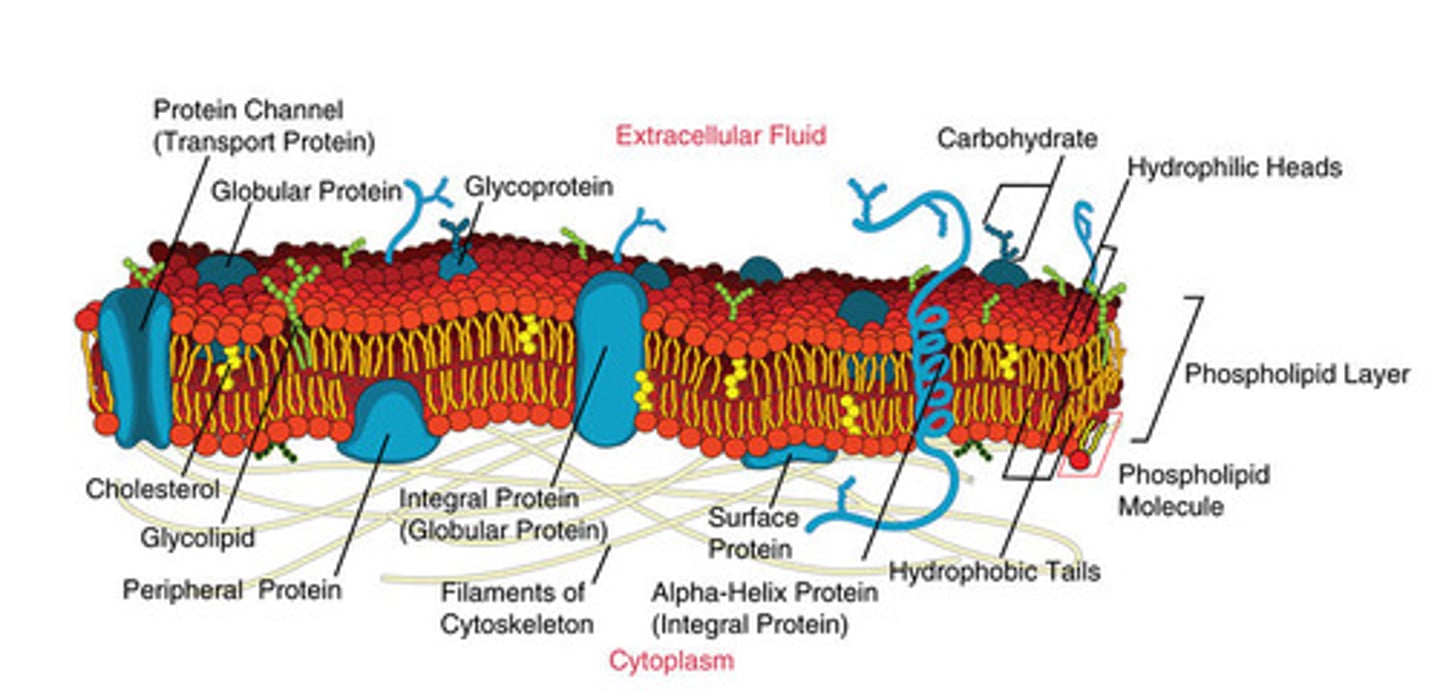
What is cholesterol?
It is a lipid which is inserted into the plasma membrane to maintain stability. In hot temperatures, it reduces the movement of the bilayer while in cold temperatures it reduces the tight packing of phospholipids.
How is fluidity maintained within a plasma membrane?
Unsaturated hydrocarbon tails help maintain fluidity at lower temperatures, while at higher temperatures can be sustained by cholesterol.
What structure surrounds the exterior of the plasma membrane in plant cells?
It is the cell wall, which is composed of cellulose.
What are plasmodesmata?
Minuscule channels between two adjacent plant cells through which materials can be freely transferred, allowing for communication between them
What is diffusion?
It is movement of molecules down their concentration gradient across a selectively permeable membrane.
What is selective permeability?
It is the ability of a membrane to manage the transfer of materials between the internal and external environments. MORE permeability means MORE molecules will get through.
What substances move easily through the plasma membrane?
Smaller, typically nonpolar molecules. Polar molecules can make it through if they are small enough, but move slower (like water).
What substances struggle to or cannot travel through the plasma membrane?
Larger, typically polar or ionic molecules. These need the help of active transport in order to move them through the membrane.
Define passive transport.
The movement of materials across a plasma membrane without the use of cell energy (ATP). Includes diffusion, facilitated diffusion, and osmosis.
Define active transport.
The movement of materials across a membrane that consumes cell energy (ATP). Includes cotransport, and is the primary function of carrier proteins and pumps.
What is the difference between integral and peripheral proteins?
Integral proteins are integrated (anchored) within the plasma membrane, often with the function of managing the transfer of materials across the membrane. Peripheral proteins are located on the surface of the membrane, and often assist with the detection of changes in the extracellular environment.
What are carrier proteins?
Integral proteins with the primary function of transferring specific molecules across the plasma membrane. Requires ATP, and is a form of active transport
What are channel proteins?
Integral proteins with the primary function of facilitating the diffusion of a substance through the membrane by creating a pathway for molecules to travel through. Does not use ATP, and is a form of passive transport.
What are sodium/potassium pumps?
Integral proteins with the primary function of pumping two potassium (K+) into the cell and pumping three sodium (Na+) out of the cell, creating an electrochemical gradient of -1 in the internal environment. Uses ATP, and is a form of active transport.
Which part of the plasma membrane assists in cell-to-cell communication?
Glycoproteins
What is osmosis?
The movement of water up its solute concentration gradient through a selectively permeable membrane.
What is an aquaporin?
A channel protein specifically used to transport water across the plasma membrane without interaction with the hydrophobic region of the membrane. Allows for water to quickly travel across compared to other methods of transport.
How can water travel across the plasma membrane?
Through osmosis, diffusion, and through aquaporins. Due to the small size of water molecules, they can penetrate the membrane but struggle to pass through the water-fearing region of the bilayer.
Define endocytosis.
The process in which a cell surrounds and takes in a substance from the extracellular environment and transfers them to the internal environment in transport vesicles. Includes phagocytosis, pinocytosis, and receptor-mediated endocytosis.
Define exocytosis.
The process in which a transport vesicle containing a substance melds with the plasma membrane of a cell, releasing its contents to the extracellular environment.
Define phagocytosis.
The process in which a cell surrounds a large, extracellular molecule with pseudopodia (small appendages that protrude from the plasma membrane), before taking it into the cell and packaging it into a transport vesicle.
Define pinocytosis.
The process in which a cell creates an opening in the plasma membrane and takes in dissolved molecules within the extracellular fluid, before sealing it off and packaging it into a protein-coated vesicle.
Define receptor-mediated endocytosis.
The process in which receptors attached to the cell's plasma membrane uptake specific molecules from the extracellular fluid, before clustering into a protein-coated vesicle and taken into the cell.
How does a low pH benefit a plant cell?
A low pH indicates that a solute is more acidic, meaning that more H+ ions are present for the cell to utilize to create an electrochemical gradient and facilitate cotransport. More molecules would enter the cell, pulled against their concentration gradient by the H+ ion.
How do salt levels of soil affect plant cells?
Due to osmosis, high levels of salt in the extracellular environment will cause water to leave the cell and travel up its solute concentration gradient. This can restrict the amount of water available to them, sometimes causing them to shrivel. Cells respond by maintaining a higher solute concentration.
What is the functional group of alcohol?
Hydroxyl (-OH)